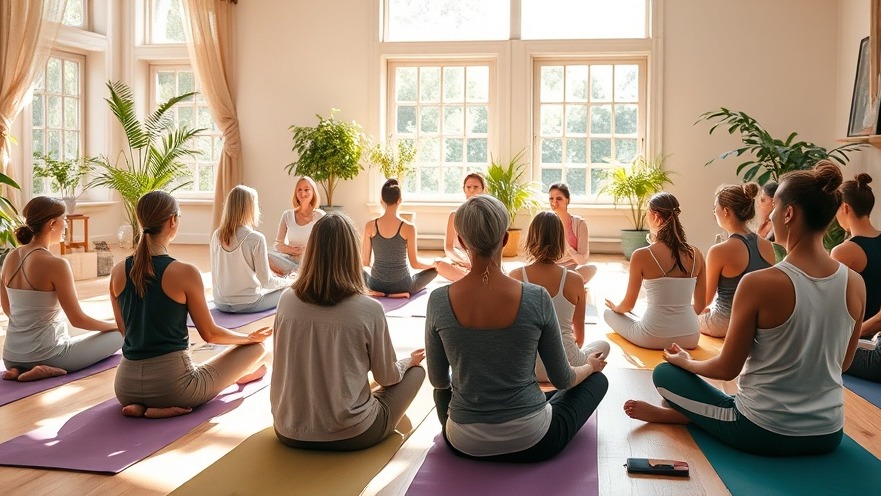
Australia’s Wellness Economy: A Rapidly Growing Phenomenon
Australia’s wellness industry is no longer in the shadows of its global counterparts. According to the Global Wellness Institute (GWI), the country now ranks fourth out of 45 Asia-Pacific nations in the wellness economy.
This isn’t just a statistic; it’s a sign of a cultural shift where health and well-being are woven into daily life, travel, and even business investment.
A Retreat That Became an Industry Symbol
When people talk about Australia’s wellness movement, Gwinganna Lifestyle Retreat almost always comes up. Tucked away in Queensland’s hinterland, it’s been a cornerstone of the scene for more than two decades.
Today, its estimated value between AUS$70–80 million highlights the financial weight wellness properties can carry.
But Gwinganna isn’t just about value — it’s about influence. By blending spa treatments with education, organic food, and nature immersion, it created a blueprint that many other retreats now follow.
That approach is what makes guests willing to invest in experiences that go far beyond a weekend escape.
Tourism With a Wellness Focus
Australia has also tapped into something spa owners everywhere should notice: wellness travel is booming. Recent numbers show a nearly 33% jump in this segment.
Unlike leisure travel centered on sightseeing or shopping, these trips are about rest, detox, and transformation.
A traveler flying to Byron Bay for a yoga retreat isn’t looking for souvenirs — they’re looking for renewal. This is why many resorts now market themselves not just as accommodations, but as sanctuaries.
For spa owners in the U.S., that’s an important lesson: people increasingly see their vacations as investments in health.
By building packages that combine treatments with lifestyle workshops or meditation sessions, you can create “mini-retreat” experiences without needing 100 acres of land.

Consumers Who Expect More
One of the biggest drivers of this growth is the consumer mindset itself. People have access to endless information about nutrition, skincare, and stress reduction, and that makes them more selective.
“Wellness is no longer a luxury; it’s an expectation,” says Professor Marc Cohen, an Australian physician and wellness researcher.
Spas that rely only on traditional massage and facial menus may find themselves losing ground.
The businesses thriving in Australia are the ones that adapt to these changing expectations — offering services that feel personal and aligned with larger well-being goals.
For U.S. spas, this may mean rethinking how you present your services: not as isolated treatments, but as part of a client’s broader health journey.
Wellness as Community, Not Just Self-Care
It’s easy to picture wellness as an individual pursuit, but Australia shows how powerful it can be when it becomes collective.
Community yoga classes, sound healing circles, and meditation workshops are thriving because people want connection just as much as they want relaxation.
Dr. Fiona Kerr, a neuroscientist who studies human connection, notes that shared experiences release powerful neurochemicals that reinforce trust and belonging.
This helps explain why wellness communities are growing so quickly.
For a U.S. spa owner, this might translate into simple ideas: host a monthly wellness talk, partner with local fitness instructors, or run a seasonal group workshop.
Not only does this bring new faces in the door, but it builds a sense of loyalty and belonging that keeps them coming back.

Where the Market Is Heading
If there’s one thing certain, it’s that the Australian wellness economy isn’t slowing down. Future predictions suggest three areas of focus:
Technology: virtual consultations, wellness apps, and AI-driven personalization.
Sustainability: eco-friendly building materials, farm-to-table dining, and low-waste product lines.
Integration: combining medical expertise with spa services for a more holistic approach.
“Sustainability is not just about reducing harm anymore; it’s about actively creating health for people and the planet,” says Amanda Alampi, a strategist in wellness and hospitality.
These themes are worth noting for spa owners in the U.S. If you’re looking ahead, think about what your clients will expect five years from now: eco-conscious design, digital support tools, and programs that go beyond pampering.

Emotional Stories That Drive Loyalty
At the heart of all this growth is something numbers can’t capture: the emotional connection. Guests leave wellness retreats in Australia not just with glowing skin or relaxed muscles, but with personal stories of transformation.
Those stories are powerful marketing tools. Encouraging clients to share testimonials, before-and-after narratives, or even their favorite treatment memories can turn your spa into more than a place of service — it becomes a part of someone’s life story.
Why U.S. Spa Owners Should Care
So why does all of this matter for a spa owner in Sacramento, Chicago, or Miami? Because the same consumer forces shaping Australia are already influencing American clients.
Travelers are craving deeper wellness experiences, communities are valuing connection, and sustainability is becoming a deciding factor in where people spend their money.
Australia’s rise is essentially a preview of where the global spa market is heading. The question is not if these changes will reach your business, but how prepared you’ll be when they do.
Final Thought: Shaping Your Future
The Australian wellness economy is thriving because it embraced change. For spa owners in the U.S., the opportunity is right in front of you.
Adapt your services, highlight authenticity, build community, and weave sustainability into your DNA. If you do, you won’t just be keeping up with the industry — you’ll be leading it.
Explore more articles on global spa destinations, advanced treatments, and industry insights in the Spa News, Treatments & Destinations category, or visit Spa Front News to stay informed on the evolving world of wellness and spa leadership.
—
Authored by the Spa Front News Editorial Team — a publication of DSA Digital Media, dedicated to elevating the spa industry with expert insights, treatment breakthroughs, and destination features for spa owners, managers, and wellness leaders.
 Add Row
Add Row  Add
Add 




Write A Comment